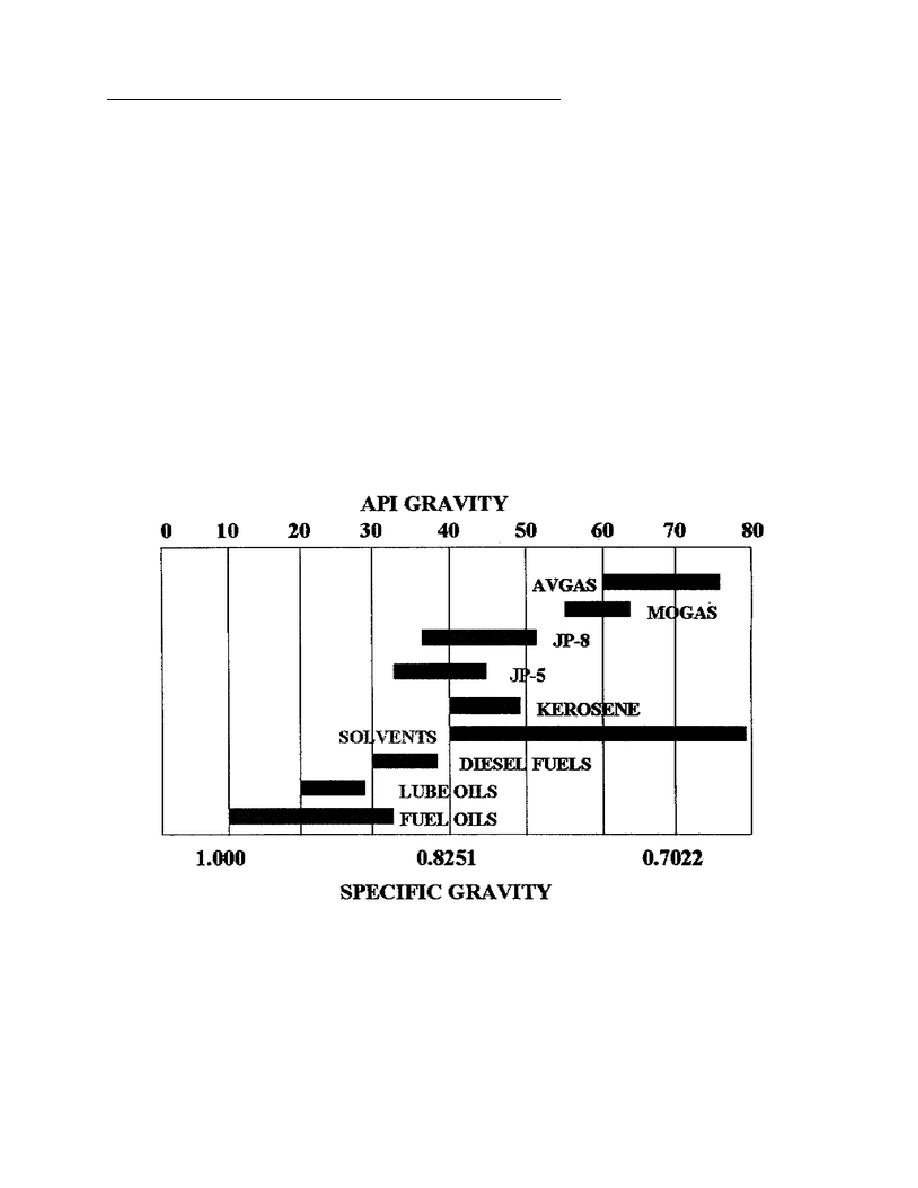
3. Calculating Fuel Characteristics Using Mathematical Formulas.
a. It is very important to understand the concept of what API gravity and specific gravity are before
performing calculations. It will give you a much better understanding of what the calculations mean
when you understand the concept of those functions. Both definitions can be found in FM 5-482,
Chapter 4 and in the glossary.
(1) Specific Gravity (SG). Specific gravity is a physical property of liquids. The specific
gravity is the ratio of the weight of a volume of liquid to the weight of an equal volume of water. The
API has given water at 60 F specific gravity of 1.0000. Traditional petroleum fuels, oils, and lubricants
are lighter or less dense than water, and thus have a specific gravity of less than 1.0000. For example,
MOGAS has a specific gravity of 0.7250, which is computed by comparing the weight of 1 gallon of
MOGAS (6.04 pounds) to 1 gallon of water (8.33 pounds).
(b) API Gravity. API gravity is a scale used by the petroleum industry based on reciprocals of
specific gravity and, therefore, produces whole numbers having a greater numerical spread. Both API
gravity and specific gravity measure the density of liquids. During prior blocks of instruction, you
learned that the API has established an arbitrary scale to express the gravity or density of liquid
petroleum products. Each fuel takes on a certain range of API gravity values, as shown in Figure 1-3
below:
Figure 1-4. Specific Gravity Ranges of Fuels
1-8
QM5203



 Previous Page
Previous Page
